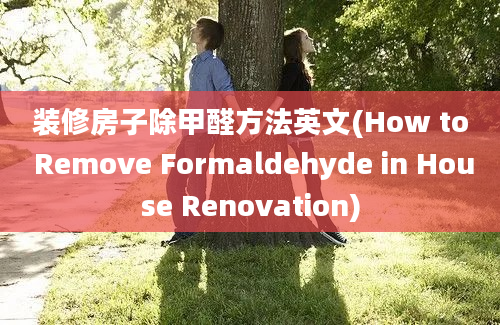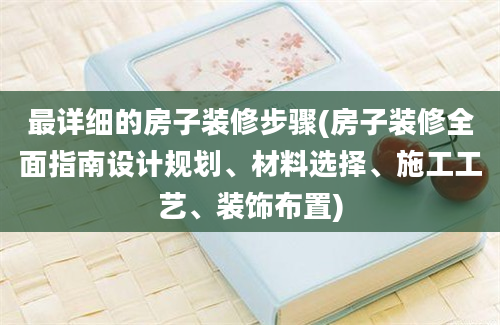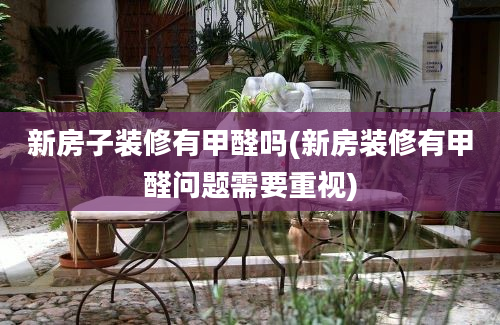Introduction
Formaldehyde is a common indoor air pollutant that can be found in building materials, furniture, and household products. During house renovation, the levels of formaldehyde can increase significantly, posing health risks to the occupants. In this article, we will explore effective methods to remove formaldehyde during house renovation.
1. Ventilation

Proper ventilation is essential in removing formaldehyde from the house. Open windows and doors to allow fresh air to circulate and carry away the formaldehyde gas. Use exhaust fans in areas where renovation work is taking place to prevent the buildup of formaldehyde indoors.
2. Indoor Plants
Indoor plants can help to naturally filter out formaldehyde from the air. Plants such as spider plants, aloe vera, and snake plants are known for their air-purifying abilities. Place multiple plants throughout the house, especially in areas with new furniture or building materials.
3. Activated Charcoal
Activated charcoal is a powerful absorbent that can effectively trap formaldehyde molecules. Place activated charcoal bags in different rooms of the house to help absorb and neutralize formaldehyde fumes. Remember to replace the charcoal bags regularly for maximum effectiveness.
4. Air Purifiers
Invest in a high-quality air purifier with a HEPA filter to remove formaldehyde and other harmful pollutants from the air. Run the air purifier continuously, especially during and after house renovation, to maintain clean and healthy indoor air quality.
5. Baking Soda
Baking soda is known for its ability to absorb odors and contaminants, including formaldehyde. Place bowls of baking soda in different areas of the house or sprinkle it on carpets and upholstery before vacuuming. Baking soda can help to reduce formaldehyde levels in the indoor environment.
6. Avoiding Formaldehyde Sources
During house renovation, opt for building materials, furniture, and household products that are low in formaldehyde or formaldehyde-free. Choose solid wood furniture, bamboo flooring, and low-VOC paints to minimize the introduction of formaldehyde into the house.
7. Professional Testing
If formaldehyde levels are a concern during house renovation, consider hiring a professional to conduct indoor air quality testing. A professional can identify the sources of formaldehyde and recommend appropriate measures to reduce its presence in the house.
Conclusion
Removing formaldehyde during house renovation is crucial for maintaining a healthy indoor environment. By implementing the methods mentioned in this article, you can effectively reduce formaldehyde levels and create a safe and comfortable living space for you and your family.

 房子装修后残留的甲醛(房子装修后甲醛超标如何解决)
房子装修后残留的甲醛(房子装修后甲醛超标如何解决) 装修的房子什么含甲醛(装修的房子竟然含有甲醛?如何应对才能保护您的健康?)
装修的房子什么含甲醛(装修的房子竟然含有甲醛?如何应对才能保护您的健康?) 装修房子零甲醛(打造零甲醛环保家居,让装修房子更健康)
装修房子零甲醛(打造零甲醛环保家居,让装修房子更健康) 装修房子甲醛的特征有哪些(装修房间时,如何识别甲醛的特征?)
装修房子甲醛的特征有哪些(装修房间时,如何识别甲醛的特征?) 房子装修含甲醛含量(房子装修甲醛含量如何处理?)
房子装修含甲醛含量(房子装修甲醛含量如何处理?) 房子装修怎么产生甲醛(房子装修引发甲醛危机)
房子装修怎么产生甲醛(房子装修引发甲醛危机) 装修房子怎样做没有甲醛(如何实现无甲醛装修房子)
装修房子怎样做没有甲醛(如何实现无甲醛装修房子) 房子装修甲醛在哪儿检测(房子装修甲醛检测关键步骤)
房子装修甲醛在哪儿检测(房子装修甲醛检测关键步骤)



